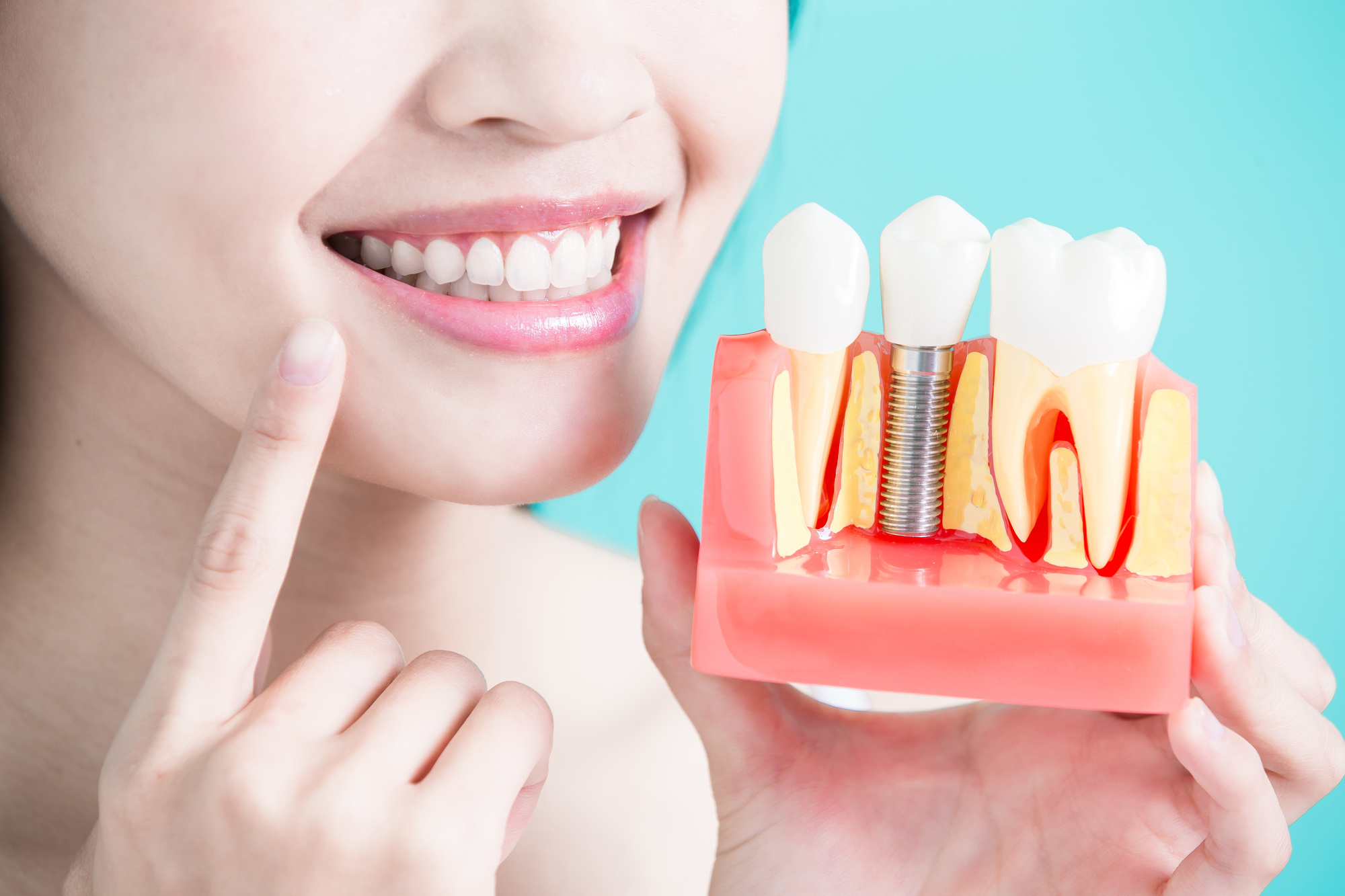
woman take tooth implant false tooth on green background
Tooth loss is a very common dental problem in the United States. 26 percent of adults that are older than 65 have fewer than eight teeth. Many people who are missing teeth suffer from dental anxiety, self-confidence issues, and difficulty eating.
There are permanent solutions available if you’re missing one or more teeth. There are a variety of different types of dental implants available that can restore your smile.
This guide will discuss the best dental implants for your specific situation.
Endosteal Implants
Endosteal implants are one of the most common types of dental implants. They’re often used as an alternative to a removable denture or bridge.
Endosteal implants utilize titanium screws that are inserted into your jawbone. The screw functions as an artificial root. For this implant to be effective, you have to have a sufficient amount of healthy jawbone.
Once the screws have been implanted, you have to wait a few months for them to heal. The jawbone also has to grow up around the implanted screw. Once the healing process is complete, an artificial tooth is attached to the screw.
Depending on your jawbone strength and where the missing tooth is located, you might need different-sized implants. Standard-sized implants are great for supporting the smaller teeth in the front of your mouth. Larger dental implants can go in the back of your mouth for your molars.
Subperiosteal Implants
Subperiosteal implants aren’t very common nowadays. They’re set over your jaw instead of inserted into it.
A metal frame gets inserted below your gum and it straddles your jawline. The frame holds one or more posts that stick up through your gums. The fake teeth are attached to that.
A subperiosteal implant doesn’t have the same amount of stability as other implants do. That’s because it rests on top of your jawbone instead of being drilled into it. Subperiosteal implants do give more stability than dentures but not as much as endosteal implants.
Single Tooth Implant
A single tooth dental implant consists of a crown that’s attached to a screw inserted into your jawbone. They’re a bit different than dental bridges. Dental bridges require that the adjacent teeth get ground and reshaped.
Your dentist will select the right shape and size for your teeth by taking measurements of the rest of your teeth. Single tooth implants are also designed to feel and look like natural teeth. These types of implants can be taken care of the same way as the rest of your teeth do.
Implant-Supported Dentures
Having missing teeth can result in jaw bone loss over a period of time. Many people replace lost teeth and bone with removable dentures. The pink plastic of dentures will need to get replaced multiple times as you continue to lose bone.
A complete set of dentures can be secured and supported by dental implants. Fixed overdentures get fasted to the dental implant by screws that join them. You shouldn’t take them out but your dentist can remove them for maintenance and cleaning.
Implant-Supported Bridgework
If you’ve lost multiple teeth, your dentist might recommend implant-supported bridgework. The bridge gets attached to the teeth that are on either side of a hap. That stabilizes the implant and enhances the function of the teeth.
This type of dental procedure is sometimes called a fixed bridge. That’s because you don’t have to take them out at the end of the day like you would a partial denture.
A traditional dental bridge will typically have two crowns at either end. Dental implants help replace missing teeth if the gap is too big. You also can avoid the need to have your existing teeth reshaped.
The Benefits of Dental Implants Over Dentures
Dental implants are designed to help patients feel confident. They don’t feel as bulky as other options.
Dental implants also stay in place in your mouth, even if your gums start to shrink. Dentures tend to slide around if they don’t fit well.
Let’s discuss some of the other benefits of dental implants.
Functionality
Dental implants give you durability and stability that you can’t find with other artificial replacements. You can chew food and speak after your recovery from your dental implant procedure.
Dentures can’t match the sturdiness that you find with dental implants. As we mentioned, dental implants will start to slip over time. You’ll find it difficult to speak and eat while you wear them.
Appearance
The artificial teeth, or crown, used with dental implants mimic the color, feel, and shape of real teeth. Your mouth won’t look disproportionate or unnatural.
If you have a single-tooth dental implant, your dentist will match the thickness and size of the implant to the rest of your teeth. If all your teeth need replacing, your dentist will find the best shade and size to complement your mouth.
Cost
When preparing for a dental implant procedure, it’s important to keep in mind that your teeth might need some work done first. You might need a comfortable tooth extraction, bone graft, or even gum surgery.
Additional procedures might increase the total cost of your dental implant surgery, but it’s well worth it. The overall health of your mouth will improve and your dental implants will be more stable.
With dentures, the upfront cost might be less expensive than dental implants but you’ll likely spend more over time. You’ll have to pay for denture replacements and adjustments.
Learn About the Different Types of Dental Implants
It can be difficult to know how to choose from the various types of dental implants. The best dentist will work closely with you to ensure you find dental treatments that will get you a flawless and healthy smile.
To learn more about how to improve your oral hygiene and health, check out one of our other articles.
Leave a Reply